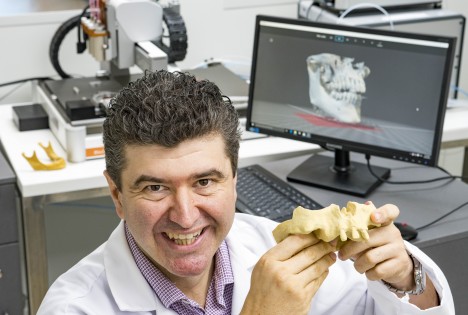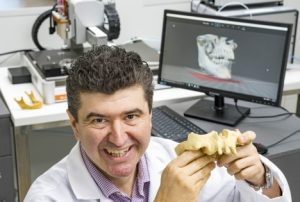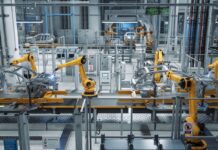
Griffith University researchers are experimenting with 3D bioprinting to develop a solution that will allow them to regrow missing teeth and bone using a patient’s own cells.

Image credit: app.secure.griffith.edu.au
Conducted by periodontist Professor Saso Ivanovski from Griffith’s Menzies Health Institute Queensland, the three-year study aims to produce new, totally ‘bespoke,’ tissue engineered bone and gum that can be implanted into a patient’s jawbone.
“The groundbreaking approach begins with a scan of the affected jaw, prior to the design of a replacement part using computer-assisted design,” Mr Ivanovski said, adding that the study was being financed through a National Health and Medical Research Council Grant of $650,000
“A specialised bioprinter, which is set at the correct physiological temperature (in order to avoid destroying cells and proteins) is then able to successfully fabricate the gum structures that have been lost to disease – bone, ligament and tooth cementum – in one single process. The cells, the extracellular matrix and other components that make up the bone and gum tissue are all included in the construct and can be manufactured to exactly fit the missing bone and gum for a particular individual.”
According to Mr Ivanovski, the new approach could permanently replace the use of dental implants which are used to replace missing teeth in patients who have lost a lot of jawbone due to disease or trauma.
“However, in many cases there is not enough bone for dental implant placement, and bone grafts are usually taken from another part of the body, usually their jaw, but occasionally it has to be obtained from their hip or skull. These procedures are often associated with significant pain, nerve damage and postoperative swelling, as well as extended time off work for the patient. In addition, this bone is limited in quantity,” he explained.
“By using this sophisticated tissue engineering approach, we can instigate a much less invasive method of bone replacement. A big benefit for the patient is that the risks of complications using this method will be significantly lower because bone doesn’t need to be removed from elsewhere in the body. We also won’t have the problem of limited supply that we have when using the patient’s own bone.”
Professor Ivanovski said the new technology was currently in pre-clinical trials, with trials in humans to begin within the next one to two years.



















